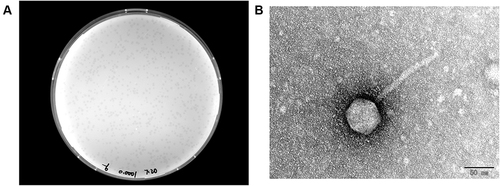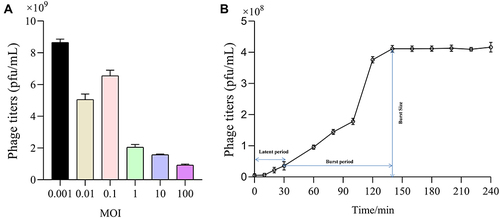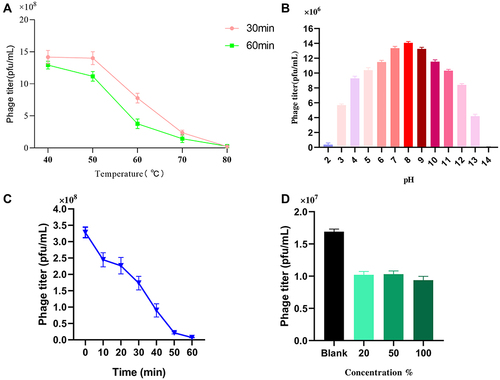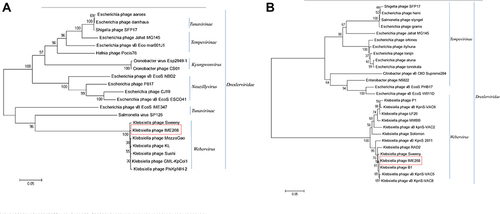Figures & data
Figure 1 (A) Morphology of IME268 plaques. Phages were plated in LB agar and overlaid with a liquid culture of K. pneumoniae 1733. The plates were incubated at 37°C. Clear, well-defined IME268 plaques were observed and photographed. (B) The morphology of phage IME268. IME268 was negatively stained with 2% phosphotungstic acid (PTA) and examined by transmission electron microscopy (TEM) at an accelerating voltage of 80 kV. The scale bar represents 50 nm.

Figure 2 Biological characterization of bacteriophage IME268. The optimal MOI (A) and one-step growth curve of phage IME268 (B); Results are presented as mean values ± SD. Strains at the optimal MOI. The supernatants were harvested at 10 min intervals post-infection, and titers were determined using the double-layer method.

Figure 3 Stability of IME268 under various conditions. (A) Temperature. (B) pH stability. (C) UV radiation stability. (D) Chloroform sensitivity. Survived phage particles were determined by double-layer tests. Error bars show the SEM among triplicate samples.

Table 1 Predicted ORFs in the genome of phage IME268


